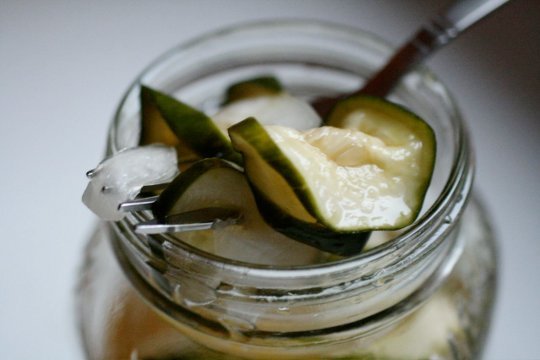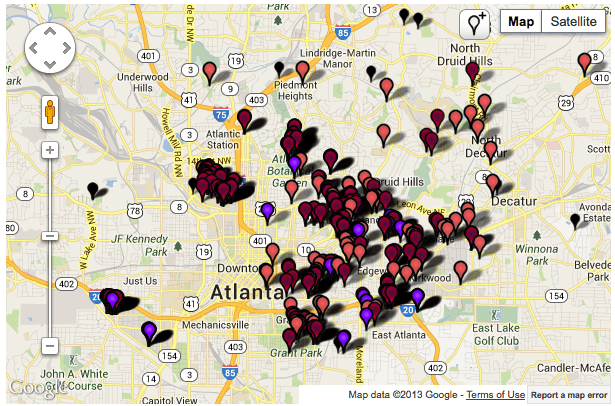Despite all this talk about how we eat everything and like everything, we are not willing to pay for everything at the same rate, and that tells you something.
Tag: Food
Why I Quit Ordering From Uber-for-Food Start-Ups
Sprig-type operations drain agency and expertise out of the world. They centralize, aiming to build huge hubs with small spokes; their innermost mechanisms are hidden. They depend on humans behaving as interchangeable units of labor.
Why Michael Pollan Is Wrong About Artisanal Food
I’m kind of exhausted with food talk these days, so I almost skipped this interview. Glad I didn’t. It’s a great change of pace.
Farm products are not food; they are the raw materials for food. Turning plants and animals into something edible is just as difficult, just as laborious as farming itself. Very few of our calories come from raw, unprocessed food. And if those calories are from fruits and vegetables, then it’s only because centuries of breeding has made them less chewy, more tasty, and easier to digest. Cooking, which is one part of processing, went hand in hand with becoming human. Human food is processed food. And there are good reasons for this. Overall, processed foods are easier to eat and digest, more nutritious, tastier, safer, and longer lasting. The idea that any change made in the raw material is detrimental is just flat wrong. […] That we can talk about “A cake made from scratch” when the butter, sugar, and flour that go into it are are highly processed shows how we have lost awareness of the energy that formerly went into food preparation.
Decoding a Menu at Root & Bone – NYTimes.com
In a study of more than a million Yelp restaurant reviews, Mr. Jurafsky and the Carnegie Mellon team found that four-star reviews tended to use a narrower range of vague positive words, while one-star reviews had a more varied vocabulary. One-star reviews also had higher incidence of past tense, pronouns (especially plural pronouns) and other subtle markers that linguists have previously found in chat room discussions about the death of Princess Diana and blog posts written in the months after the Sept. 11 attacks.
In short, Mr. Jurafsky said, authors of one-star reviews unconsciously use language much as people do in the wake of collective trauma. “They use the word ‘we’ much more than ‘I,’ as if taking solace in the fact that this bad thing happened, but it happened to us together,” he said.
Another finding: Reviews of expensive restaurants are more likely to use sexual metaphors, while the food at cheaper restaurants tends to be compared to drugs.
15 Questions for San Antonio’s Matt Bonner
Here is a very rudimentary formula I came up with for rating a sandwich:
Score on a scale of 1-100:
A = bread
B = meat
C = fixings
D = sauces
.4(A) + .3(B) + .2© + .1(D) = overall score on a 0-100 scaleEach ingredient is weighted based on its level of importance to a good sandwich. Please note that the coefficients can certainly change when dealing with specialty sandwiches (for example, a steak and cheese would have a higher value placed on meat).
Lizzie Widdicombe: Could Soylent Replace Food? : The New Yorker
With a bottle of Soylent on your desk, time stretches before you, featureless and a little sad. […] Soylent makes you realize how many daily indulgences we allow ourselves in the name of sustenance.
Lizzie Widdicombe: Could Soylent Replace Food? : The New Yorker
The Case Against Eating Lunch Outside
Only on special “it’s such a nice day!” kind of days do people want to go outside. But what’s a nice day? Well, it’s a day when the temperature outside approximates the results of indoor climate control technology.

Pickling Basics: Easiest Refrigerator Pickles | The Kitchn. This might have changed my life. Early exit polls are promising.

The Cookbook Theory of Economics – By Tyler Cowen | Foreign Policy. Cookbooks as a proxy for economic development…
Soon it will be possible to cook the dishes of the entire world, but only those, alas, that survive the process of commercialization and standardization.
Can authenticity be aware of itself as such and still be authentic?
An ongoing project to document food sources in the Atlanta area. It is very incomplete and constantly changing, so if you know about a great fruit tree or other food source that you think should be on the map, please add it to the map!
Currently in season: blackberry, mulberry, plum, and serviceberry. Gotta get my harvest on.
So Jerry Seinfeld Called Us To Talk About Coffee : The Salt : NPR
I got married and I had a family and my entire day was not free for social interaction. And eating is annoying and difficult to arrange, [and it’s] hard to choose places. And meeting someone for coffee suddenly seemed like a wonderful, compact, accessible and portable social interaction. You don’t even really need a place. But you feel like you’re doing something. That is what coffee is. And that is one of the geniuses of the new coffee culture.
Shortly before reading this, I invited a friend to meet for coffee and not talking:
ELAINE: Come on, let’s go do something. I don’t want to just sit around here.
JERRY: Okay.
ELAINE: Want to go get something to eat?
JERRY: Where do you want to go?
ELAINE: I don’t care, I’m not hungry.
JERRY: We could go to one of those cappuccino places. They let you just sit there.
ELAINE: What are we gonna do there? Talk?
JERRY: We can talk.
ELAINE: I’ll go if I don’t have to talk.
So Jerry Seinfeld Called Us To Talk About Coffee : The Salt : NPR
The Ecology of Obesity | Newgeography.com
Part of what makes obesity a wicked problem is how existing solutions — farmers markets, anti-corporate marketing — led advocates to frame the problem in particular ways. “The picture painted by advocates of grocery stores and gardens in the inner city was compelling to so many in no small part because it combined an established way of thinking about poor neighborhoods as materially deprived along with rising cultural support from middle-class Americans for eating healthier, locally grown foods,” Lee writes.
So we’re debunking “food deserts” now. More from Jacob Geller, I thought this was a useful way to think about it:
What I think is going on in America is that if someone really does want to eat healthy — and they know how to — then they will eat healthy, but huge numbers of Americans “choose” not to. The cost and the distance don’t much matter. And I put “choose” in air quotes, because people are not “choosing” per se, rather they are hooked. They buy sugar instead of broccoli, because sugar tastes awesome and goes with everything, whereas broccoli is gross. The deck is physiologically stacked in favor of sugar. The cost and the distance are virtual non-factors for most Americans, outliers notwithstanding, and obesity really does need to be tackled aggressively on the demand side, if at all possible, precisely because distance and cost are virtual non-factors.
The economist’s way of saying the same thing is that unhealthy foods (like sugar) tend to be sort of addictive, or habit-forming, or are at least advantaged by our physiology or biology, so our demand for that food tends to be pretty insensitive to price (or “inelastic”). And because our demand is insensitive to price, shifting the supply curve one way or the other isn’t going to change the quantity consumed all that much. You can fiddle with the supply curve all you like, but the problem is ultimately that this inelastic demand curve is keeping quantity consumed stuck more or less in the same place. So from a public policy and public health standpoint, it’s better to just tackle the demand curve, by shifting it leftward or making it less inelastic, through solid health education curricula or forming good eating habits during childhood, or whatever, if possible.

Aggregating! (via @gwynnstu).
Julian Baggini – The art of coffee
The logical consequence of molecular gastronomy is haute-mechanisation. If the best way to cook meat, for example, really is to vacuum-seal it with some herbs and spices and cook in water at 55 °C (131 °F) for 48 hours, then as soon as a suitable, cheap sous-vide cooker is available, there is no reason why a novice chef in a local pub, or anyone else for that matter, couldn’t collect it from the butcher and do as good a job as anyone else.
White Bread Kills: A history of a national paranoia.
That which I don’t eat makes me better than you.
Sometimes Formica Is Better Than White Cloth — How to Cook Everything – NYTimes.com
It’s about expectations and consistency. Whatever I expect from a four-star restaurant has become unachievable. […] If the food isn’t delicious, everything else will just seem annoying, and that happens quite a lot.
Sometimes Formica Is Better Than White Cloth — How to Cook Everything – NYTimes.com
Alzheimer’s could be the most catastrophic impact of junk food | The Guardian
The strong association between poor diets and poverty allows people to use this issue as a cipher for something else they want to say, which is less socially acceptable.
Alzheimer’s could be the most catastrophic impact of junk food | The Guardian

Campbell Soup Company is tapping Andy Warhol for another 15 minutes of fame. I’m not surprised that Target is involved in this.

